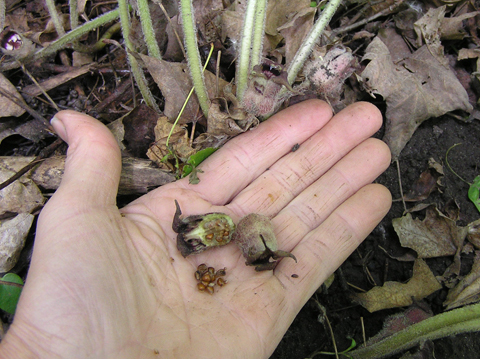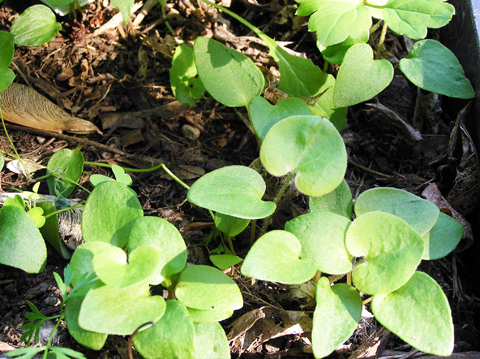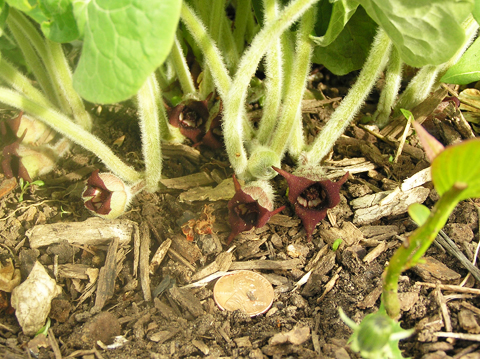 |
| Home | Ordering By Mail | Purchase Manual: Using Native Plants in Urban Landscapes |
|
|||||
Species Name: Asarum canadense
Common Name: Wild ginger
Zone: 3 to 8
Distribution: New Brunswick, Quebec and Ontario south to North Caroliina and Alabama.
Seed collection: Seed matures in late spring. In the Northeast from early to mid June. The fruit is a small mealy pod that looks very similar to the flowers. The flowers and fruit are close to the ground and hidden by the foliage, lift the leaves to expose the fruits. Each pod holds from a few dozen to a hundred seeds. When the pods mature they begin to decompose and disintegrate. In nature the seeds are ant dispersed. Monitor the pods closely and harvest pods when the seeds turn a reddish brown color.
Seed handling: Place pods in a plastic bag until they have softened and turn mushy. Macerate the fruits by hand, add water, and then pour off the pulp. Sound seed will sink to the bottom. Seed can be planted immediately or stored for later planting. Do not allow seed to dry as seed loses viability rapidly. Placing seed directly into the soil gives good results with a high percentage of germination occurring the following spring. Seed stored for later planting should be stratified in moist potting media for spring planting the following year. Stratified seed often germinates early in the bag and should be planted out when the first seed begins to germinate.
Germination requirements: Seed requires a period of warm/moist stratification followed by cold/moist stratification to overcome seed dormancy. Seed can be stored in a refrigerator for one to two months but the seed may begin to germinate prematurely, a better method is to store the seed under outdoor temperatures to satisfy the chilling requirement. Seed should germinate the first spring if planted immediately after collecting or given the proper sequence of warm/cold stratification. Plant the seed in natural soil where you want the plants to grow. Press the seed into the soil surface but not deeper than ½”. First year seedlings are quite small but are developing a strong rhizome that will produce a sizeable plant the next year.
Ecology: Wild ginger is an easy woodland species to grow from seed. Wild ginger grows in part sun to full shade in moist to average organic woodland soils. Wild ginger forms a dense rhizomatous matt spreading outward from the parent plant about 6 to 8” per year. All parts of the plant are fragrant smelling like the culinary herb. Wild ginger is listed in reference books as deer resistant but it is eaten on occasion. Wild ginger grows with many other woodland associates like False solomon seal, Blood root, Wild geranium and Maiden hair fern.

Harvest fruits when the seed has turned light brown
or when the fruits begin to disintegrate.

Wild ginger seedlings shortly after germination.
Young plants look like small versions of mature plants.

Wild ginger flowers
this page updated December 20, 2010